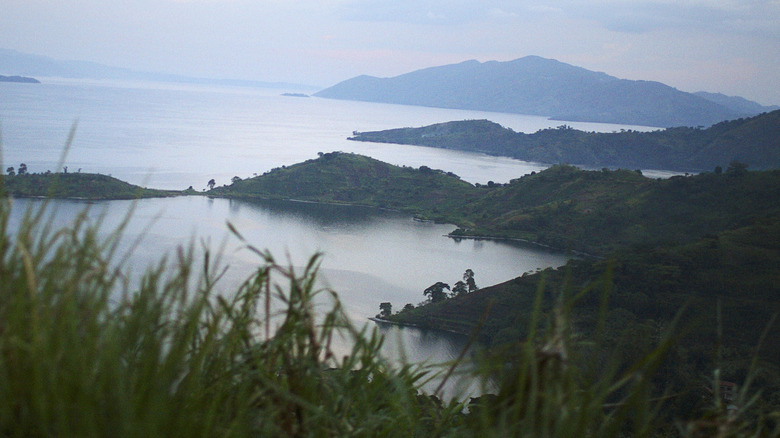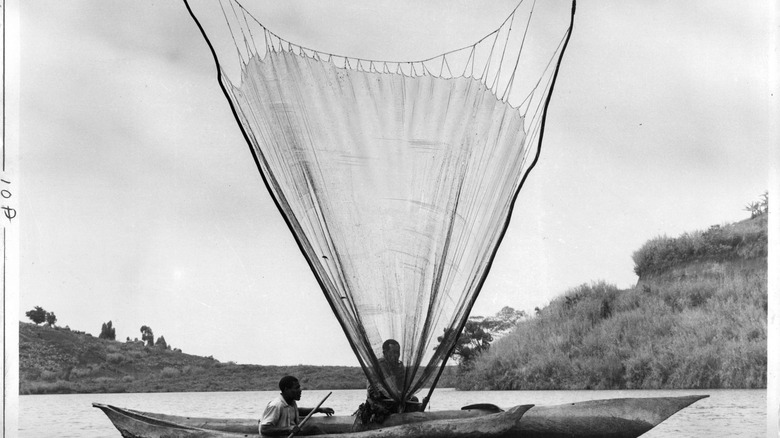This Lake In Africa Is One Of The Most Dangerous Places On Earth
From space, Africa's Lake Kivu looks like a pair of blue lungs resting between Rwanda and the Democratic Republic of the Congo, as NASA images reveal. But the seemingly tranquil lake holds a potentially deadly secret that could choke the life out of millions of people. The lake holds 60 cubic miles of dissolved carbon dioxide and 14 cubic miles of methane, as well as toxic hydrogen sulfide, according to Nature. Scientists are worried that the lake could one day release those dangerous gasses in an explosion known as a limnic eruption that would potentially pump 2.6 gigatons of carbon dioxide into the atmosphere. This would also be dangerous for the population centers surrounding the lake because high carbon dioxide concentrations can displace oxygen and make it more difficult to breathe, BBC News explained. A similar explosion from Cameroon's Lake Nyos suffocated 1,800 people in 1986, but many more people live near Lake Kivu.
"It could create one of the worst, if not the worst, natural humanitarian disasters in history," Philip Morkel, an engineer and founder of Hydragas Energy, which is trying to remove gas from the lake, told Nature.
An unusual threat
A limnic eruption occurs when gasses that have dissolved at the bottom of a lake are released, according to BBC News. Of the very few lakes capable of such an eruption, Lake Kivu is the largest, Nature said. It is 55 miles long and more than two million people live near its shores, which is why an eruption would be so disastrous, Future Planet said.
A limnic eruption can be triggered for two reasons: if the water becomes saturated with carbon dioxide and methane or if something disturbs the lake and forces the gas-rich deeper waters to mix with the upper layer of water. This reduces pressure on the gasses and is similar to the effects of shaking and opening a soda can. Lake Kivu sits in an active seismic area, so an explosion could be triggered by an earthquake or volcanic eruption. Climate change could also increase the risk of catastrophe. Past evidence indicates that a previous eruption occurred when a drought caused the water levels to fall and reduced pressure on the gasses at the bottom of the lake. However, both concentrations of gasses in the lake and seismic activity nearby are being closely monitored to protect surrounding communities.

